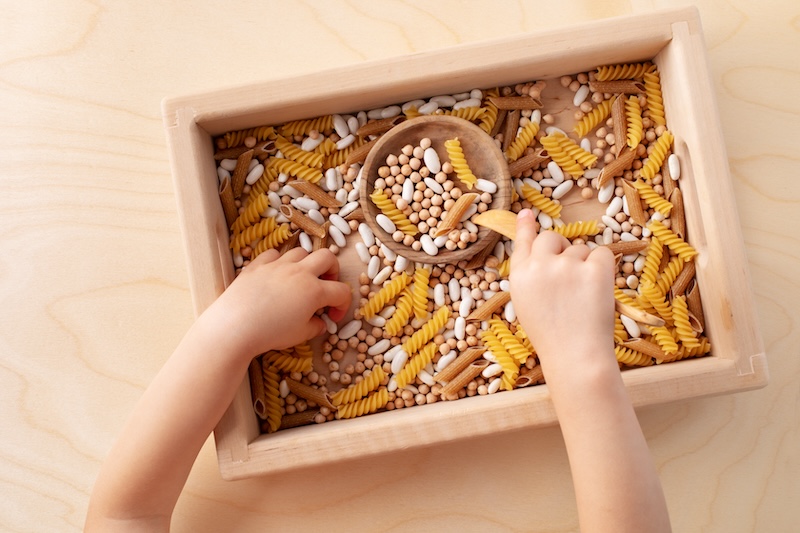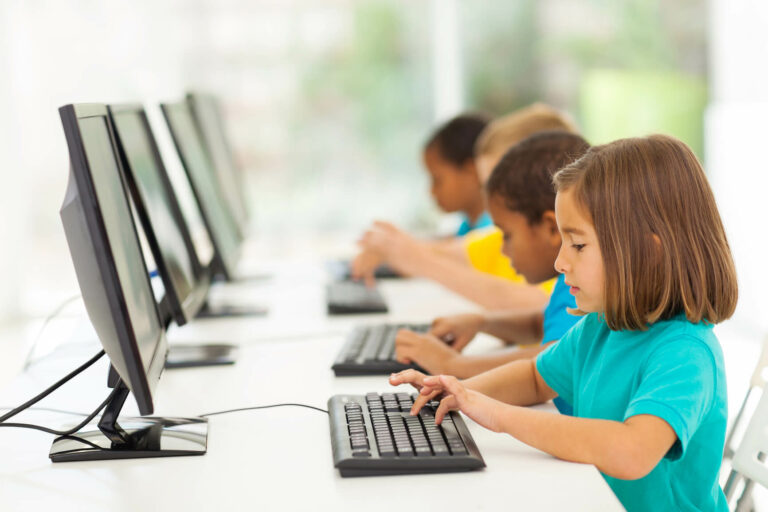Hands-On Experiences That Transform Early Childhood Learning
At Heritage Learning Center, we understand that children learn best through exploration and discovery. Our team of early childhood specialists has observed how sensory play creates those magical “aha!” moments when neural connections visibly form. Research confirms that engaging multiple senses simultaneously strengthens brain pathways essential for cognitive development, language acquisition, and problem-solving skills. Recent studies show that children who regularly participate in sensory activities develop stronger neural networks, leading to enhanced learning capabilities in later years. At our centers across the community, we’ve thoughtfully designed environments that invite children to touch, taste, smell, hear, and see the world around them in safe, stimulating ways. Our approach isn’t just about keeping little hands busy—it’s about building brains primed for future academic success.

1. Rainbow Rice Sensory Bins: Developing Fine Motor Skills and Cognitive Mapping
Rainbow rice sensory bins offer a vibrant tactile experience that engages multiple brain regions simultaneously. When children sift, pour, and explore colored rice, they’re actually building crucial neural pathways.
How it works: Fill a shallow container with dyed rice and add scoops, funnels, and small toys. As children manipulate the materials, their brains create cognitive maps of spatial relationships while strengthening fine motor control. The vibrant colors stimulate visual processing centers, while the soft sounds of rice being poured activate auditory pathways.
Brain-building benefits: This activity develops hand-eye coordination, strengthens finger muscles needed for writing, and builds mathematical concepts like volume and measurement—all while giving children a soothing sensory experience that helps regulate emotional states.
2. Nature Texture Walks: Connecting with the Natural World Through Touch and Sight
The varied textures found in nature provide perfect sensory stimulation that’s both calming and intellectually stimulating for developing brains.
How it works: Take children on a “texture hunt” around your yard or local park. Have them feel tree bark, smooth stones, fuzzy leaves, and cool mud. Create a collection of found items or make rubbings of interesting textures using paper and crayons.
Brain-building benefits: This activity creates rich sensory memories that help children categorize and understand their world. The combination of movement, fresh air, and varied tactile experiences stimulates multiple brain regions while building vocabulary as children describe what they’re feeling and seeing.
3. Homemade Play Dough Exploration: Building Language Through Sensory Discovery
The squishable, malleable nature of play dough makes it an ideal medium for brain development, combining tactile stimulation with imaginative play.
How it works: Create homemade play dough using simple kitchen ingredients, adding scents like vanilla, mint, or cinnamon for multisensory stimulation. Provide tools like rollers, cookie cutters, and plastic knives for creative exploration.
Brain-building benefits: Manipulating play dough strengthens the hand muscles needed for writing while developing spatial awareness. The added scents stimulate memory formation, as the olfactory system connects directly to the brain’s emotional and memory centers. As children describe their creations, they build essential language skills.
4. Musical Water Play: Combining Auditory and Tactile Stimulation
Water play with a musical component creates a rich sensory experience that activates multiple brain regions simultaneously.
How it works: Fill different containers with varying amounts of water. Provide spoons or mallets for children to tap the containers, creating different tones. Add food coloring for visual stimulation or ice cubes for temperature exploration.
Brain-building benefits: This activity helps children understand cause and effect while developing auditory discrimination skills crucial for language development. The combination of water’s soothing tactile properties with musical discovery creates perfect conditions for neural growth.
5. Light and Shadow Exploration: Developing Visual Processing and Scientific Thinking
Playing with light and shadow helps children understand abstract concepts through concrete visual experiences.
How it works: In a darkened room, provide flashlights and transparent colored objects. Encourage children to create shadows on walls, mix colors, and observe how light travels through different materials.
Brain-building benefits: This type of play develops visual discrimination skills while introducing early science concepts. As children predict and observe shadow effects, they’re building critical thinking skills and understanding cause-and-effect relationships.
Experience the Brain-Building Power of Sensory Play
At Heritage Learning Center, we integrate these and many other sensory activities into our daily curriculum, ensuring children receive the multisensory experiences their developing brains crave. We invite you to schedule a tour of our center to see how our thoughtfully designed environments support optimal brain development through play.
Contact us today to learn how your child can benefit from our brain-building approach to early education.


